A fire pan is not only a quality and durable utensil that will last you for years, but it is also a ticket to the club of true outdoor gourmets. We have some important recommendations and concise tips to help you choose reliable utensils for your outdoor activities.
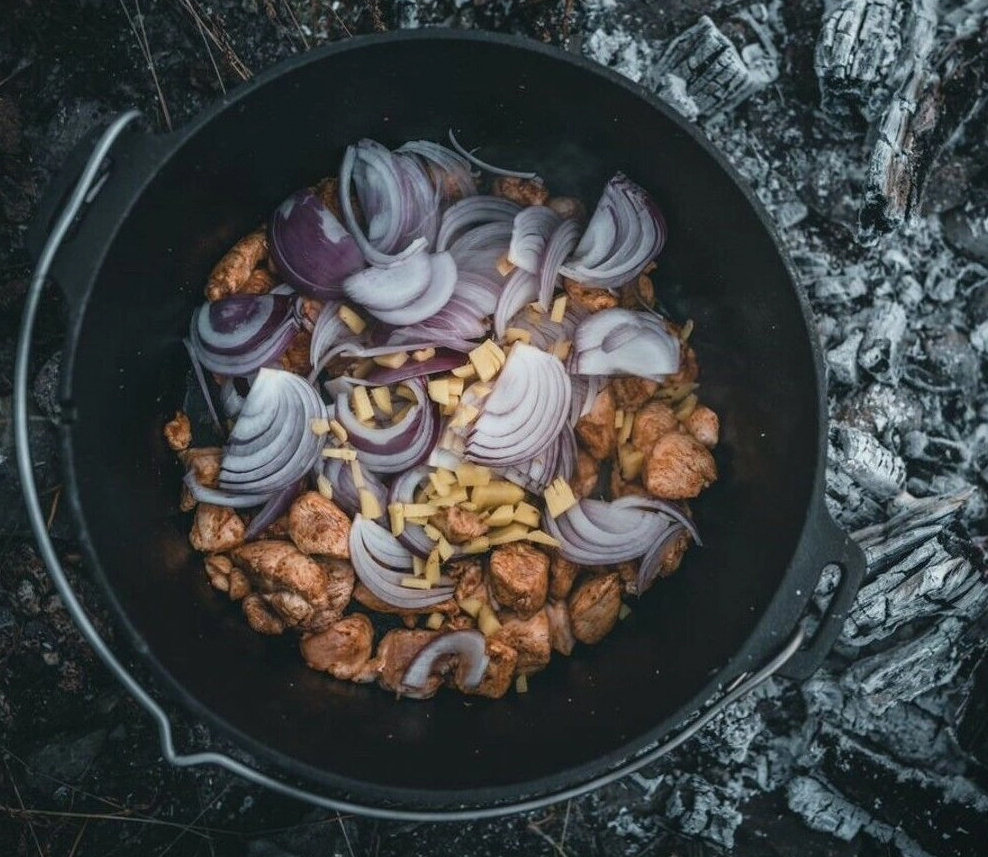
What makes fire pans different from conventional ones
Best fire pans according to customer reviews
Our tip
Read also

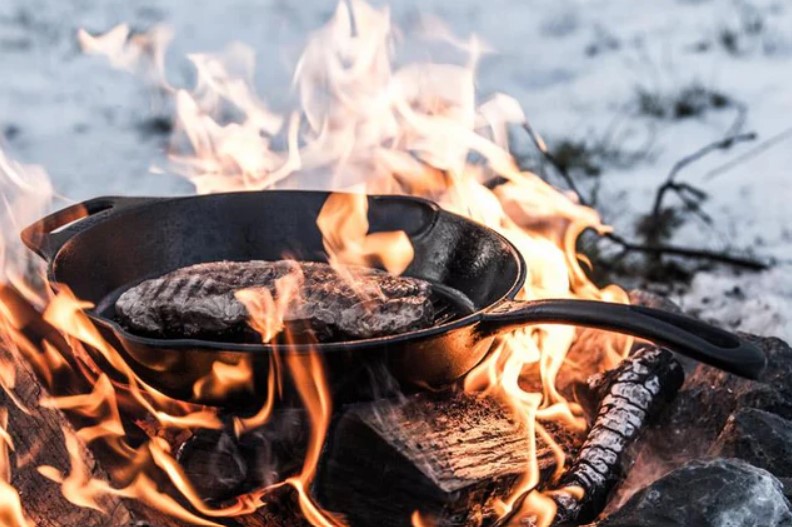
The secret of the longevity of cast iron pans
While cast iron pans are durable and virtually indestructible, they need a little care and love to last for years...
Fire pans: types and uses
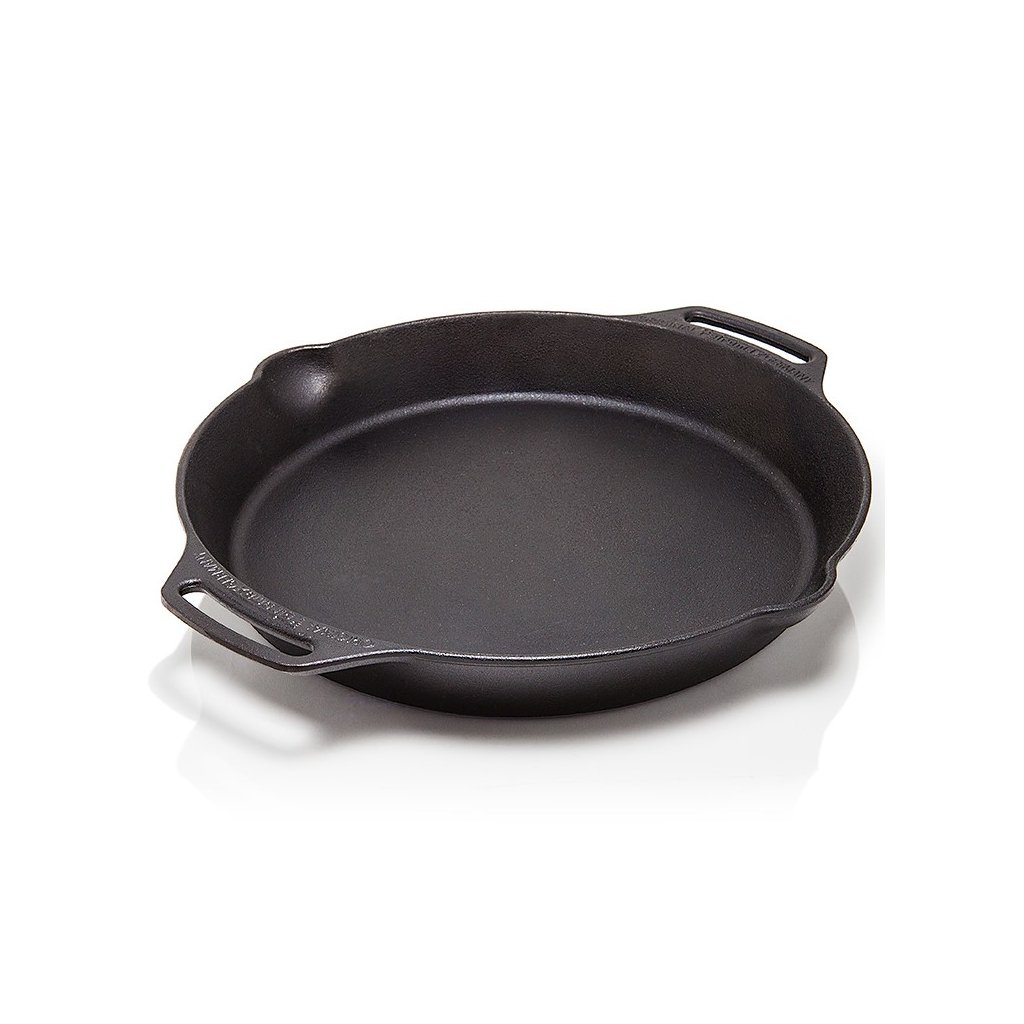
Cast iron fire pans
- They are great at maintaining temperature and are so durable that they will last a lifetime with proper care.
- You can not only fry in them, but also bake or stew and, of course, serve them straight away.
- With each use, they develop a naturally non-stick coating.
- They are not washed, they are only wiped with a paper towel after each use and also require special care in the form of regular oiling.
- They tend to be heavy.

Steel fire pans
- They are slightly lighter than cast iron pans and therefore easier to handle.
- They heat up quickly and then cool down quickly, so they are ideal for the brisk preparation of simple dishes.
- If you burn them properly before using them for the first time, they will develop a naturally non-stick surface.
- They are prone to corrosion and therefore require thorough cleaning and subsequent oil treatment.
- They are usually more affordable than cast iron pans.
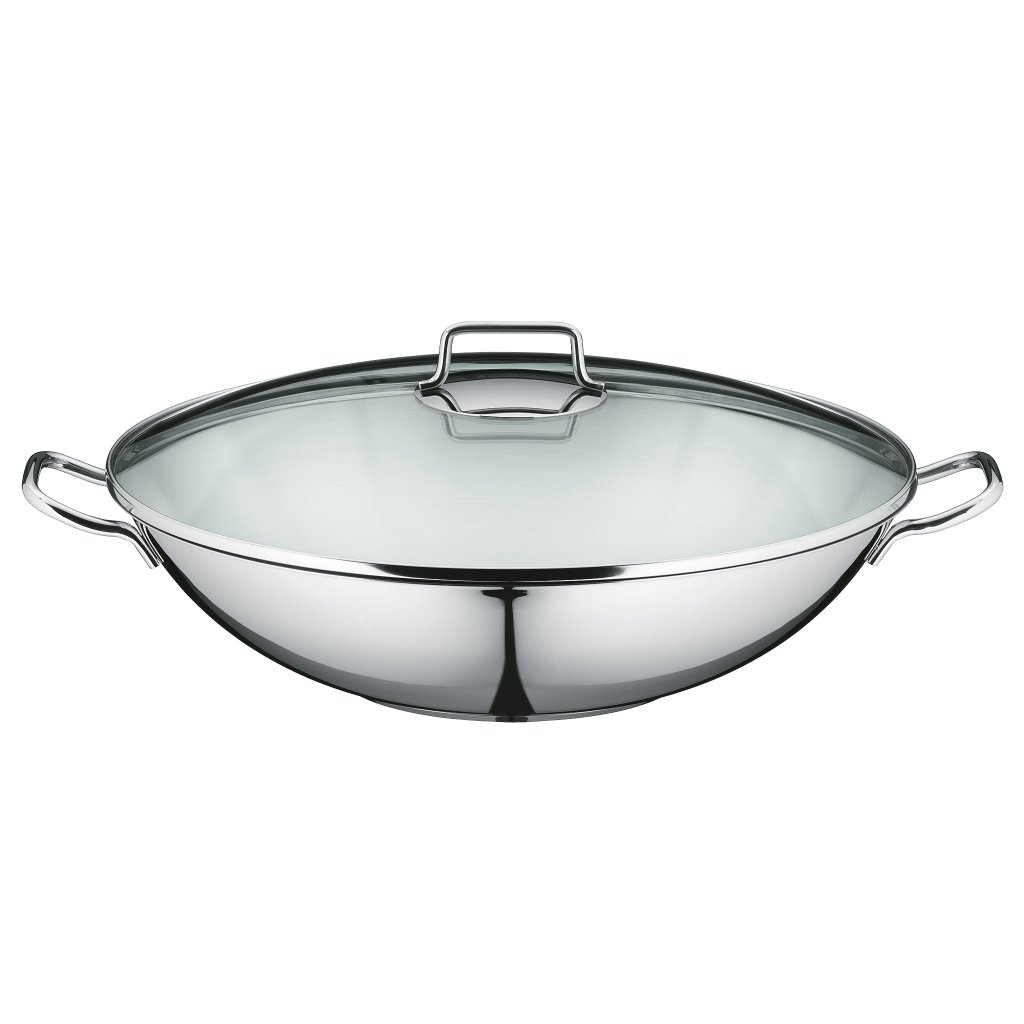
Stainless steel fire pans
- They are resistant to both high temperatures and corrosion.
- They are easy to clean and require no special care.
- They are lightweight and affordable.
- You need to use more fat for cooking so that the food does not burn.
- They do not accumulate heat as well as cast iron pans. This means that the temperature in the pan can be less stable and if it is not hot enough, food will often burn.
- At extreme temperatures, deformation can occur.
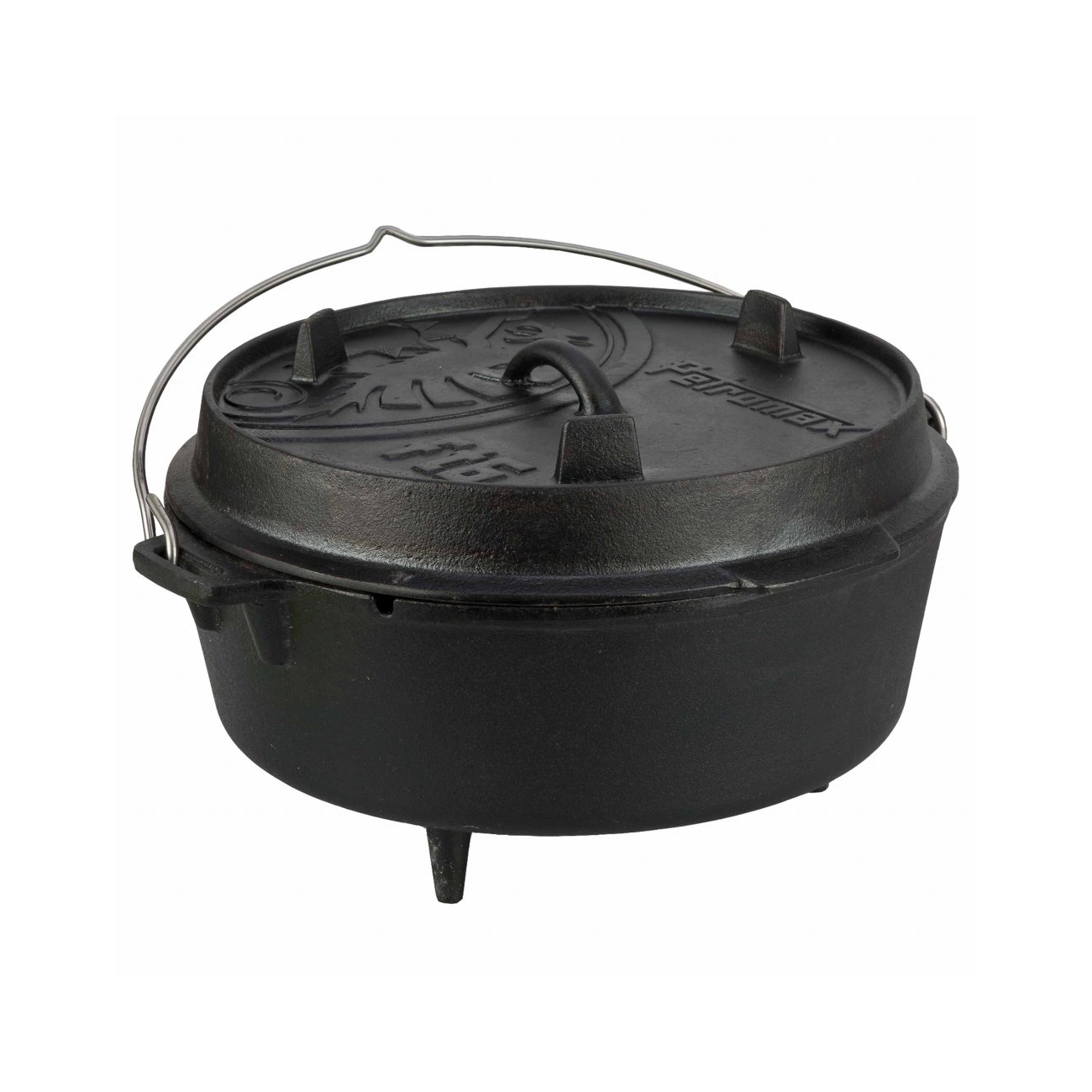
Fire pans with legs
- They look more like kettles, but they also serve as pans.
- The legs make them stable, reducing the risk of their contents tipping over into the fire.
- They are usually equipped with a handle that makes them easier to carry and a lid that helps keep the food hot longer.
- They tend to be heavier than pans without legs.
- It is one of the more expensive fire pans.
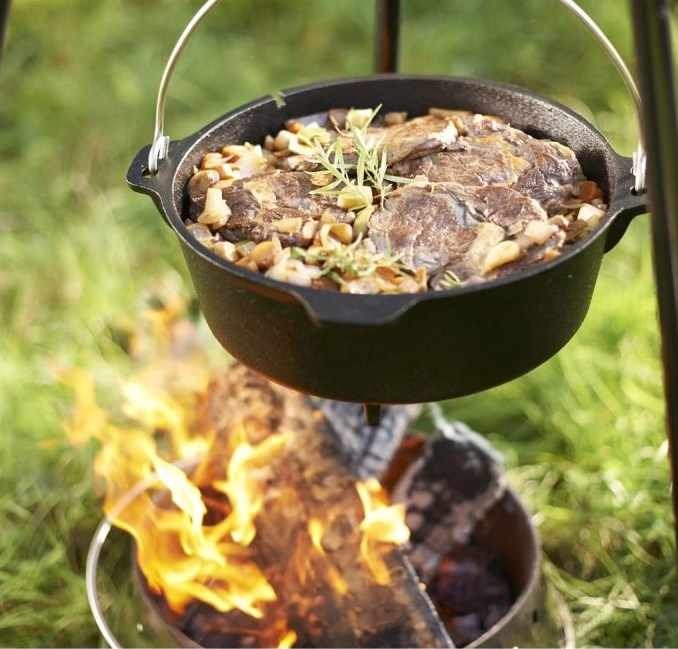
Which pans do not belong on the fire
- Pans with non-stick surface - whether it is titanium, ceramic or any other non-stick material, these surfaces are not designed for cooking at high temperatures and certainly not for contact with direct fire.
- Pans with plastic or wooden elements - they could catch fire or melt on fire.
- Pans with thin walls - thin walls can easily deform due to high temperatures.
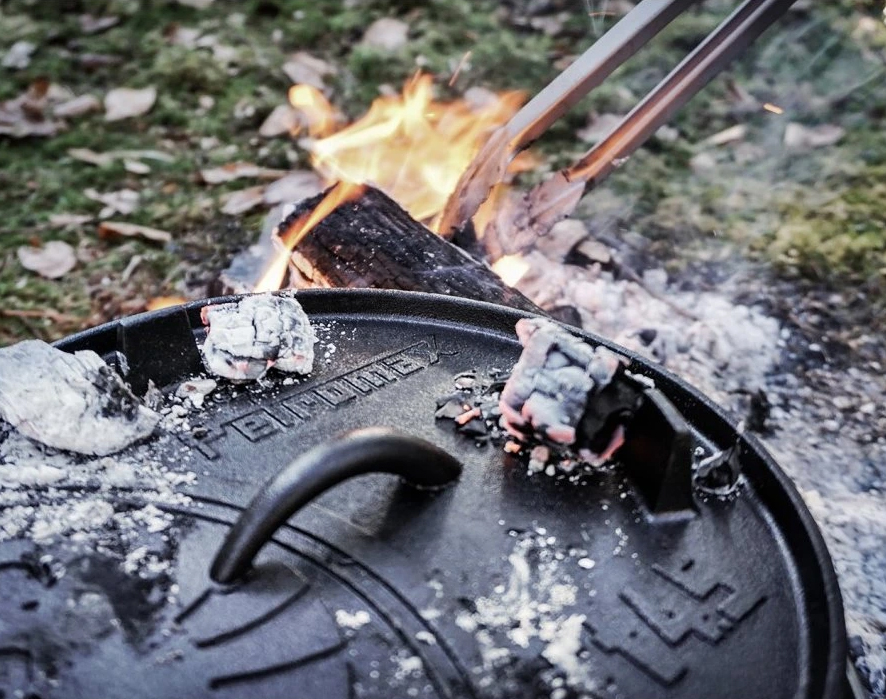
5 features to look for when choosing a fire pan
- Material - consider what dishes you will cook most often and choose the appropriate material accordingly.
- Size - based on the number of people you will be cooking for most often. Remember that the smaller the pan, the lighter it will be.
- Type - fire grill pans are great for preparing meat and fish, in short for grilling. Fire wok or other deep pans are excellent for cooking bulky dishes, stews, etc.
- Handle - remember that the handle must also be made of a material that can withstand direct fire.
- Retrieved from - if you plan to carry your pan on outdoor hikes, aim for the smallest size and lowest weight. If you'll only be cooking at home in the garden, then these factors may not play a significant role for you.

Pans for fire
Cooking tips:
Never put a cold pan on a hot fire. It could crack. It's safer to use her gradual heating.
Due to the material of the pan you may or may not use fat for cooking. But the truth is that in addition to non-stick, it also adds flavour to the food.
After each use the pan let cool and clean. If the material requires it, rub it with oil.
O cooking safety in nature your parents have certainly taught you many times, but to be on the safe side, we join them and recommend that you always choose a suitable place to build a fire and do not leave it while it is still burning.
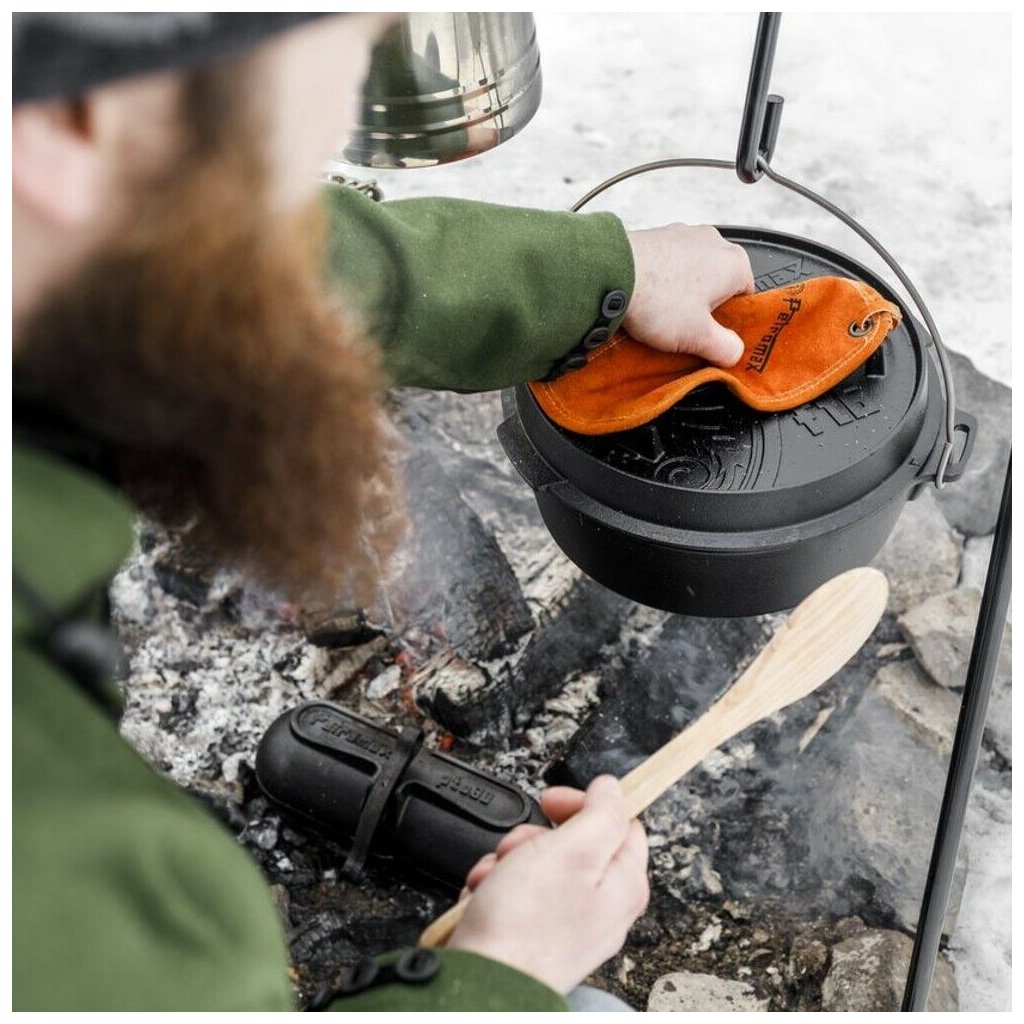
Top fire pans
Fire pans Petromax are legendary cast iron pans developed specifically for cooking over an open fire. Their sturdy construction and ability to evenly distribute and retain heat make them a favorite tool for outdoor enthusiasts and gourmets alike. Thanks to its solid construction, the Petromax cast iron skillet really does last a lot, and according to all the amateur and professional chefs who own this outdoor cooking icon, all the dishes taste much better from it too.
Fire pans PetromaxFAQ
The most frequently asked question
What is the best fire pan material?
High temperature resistant materials are cast iron, steel or stainless steel. Non-stick pans are not suitable.
How to choose the right size fire pan?
The size of the pan depends on how many people you are cooking for and what kind of food you plan to prepare. In general:
- For 1-2 persons: a pan with a diameter of 20-25 cm is sufficient.
- For 3-4 persons: a pan with a diameter of 25-30 cm is suitable.
- For a larger group: Choose a pan with a diameter of 30 cm or more.
Can I use any fuel under the fire pan?
The most commonly used fuel is wood, charcoal or briquettes. Some pans may also be suitable for gas burners, but it is always important to follow the manufacturer's instructions.
What is the best pan for cooking steaks on fire?
A heavy cast iron pan is ideal for cooking steaks, as it can maintain a high temperature and sear the meat until golden brown.
How to care for a cast iron fire pan?
After each use, clean the pan with a paper towel or sponge and water. Do not leave food residue in it. After cleaning, brush the pan with a thin layer of oil and heat until it starts to smoke. This will rebuild the protective layer on the pan.










